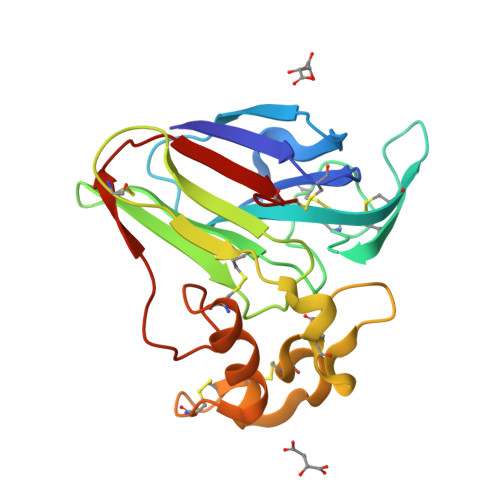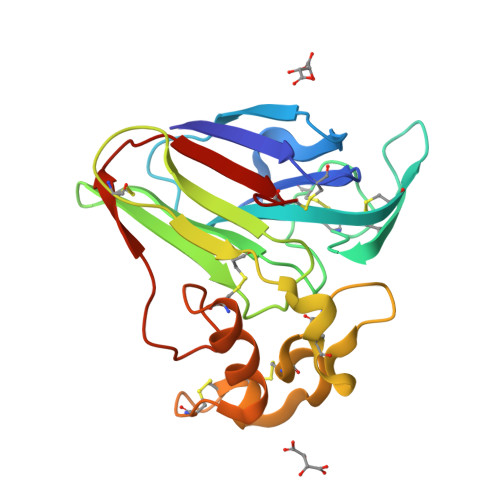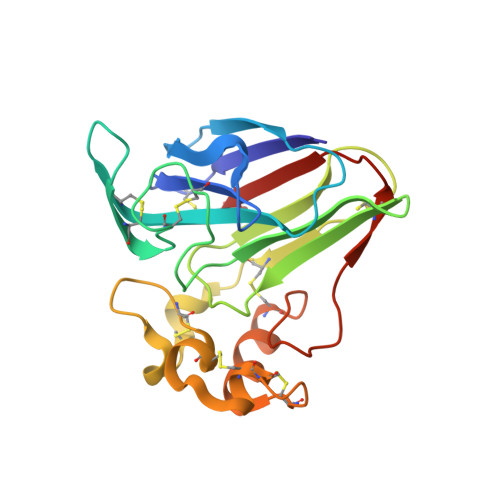A multicrystal diffraction data-collection approach for studying structural dynamics with millisecond temporal resolution.
Schubert, R., Kapis, S., Gicquel, Y., Bourenkov, G., Schneider, T.R., Heymann, M., Betzel, C., Perbandt, M.(2016) IUCrJ 3: 393-401
- PubMed: 27840678
- DOI: https://doi.org/10.1107/S2052252516016304
- Primary Citation of Related Structures:
5LH0, 5LH1, 5LH3, 5LH5, 5LH6, 5LH7, 5LMH, 5LN0 - PubMed Abstract:
Many biochemical processes take place on timescales ranging from femto-seconds to seconds. Accordingly, any time-resolved experiment must be matched to the speed of the structural changes of interest. Therefore, the timescale of interest defines the requirements of the X-ray source, instrumentation and data-collection strategy. In this study, a minimalistic approach for in situ crystallization is presented that requires only a few microlitres of sample solution containing a few hundred crystals. It is demonstrated that complete diffraction data sets, merged from multiple crystals, can be recorded within only a few minutes of beamtime and allow high-resolution structural information of high quality to be obtained with a temporal resolution of 40 ms. Global and site-specific radiation damage can be avoided by limiting the maximal dose per crystal to 400 kGy. Moreover, analysis of the data collected at higher doses allows the time-resolved observation of site-specific radiation damage. Therefore, our approach is well suited to observe structural changes and possibly enzymatic reactions in the low-millisecond regime.
Organizational Affiliation:
University of Hamburg c/o DESY, Notkestrasse 85, 22603 Hamburg, Germany; The Hamburg Center for Ultrafast Imaging c/o DESY, Luruper Chaussee 149, 22761 Hamburg, Germany.

















